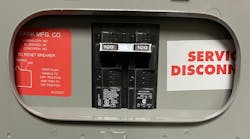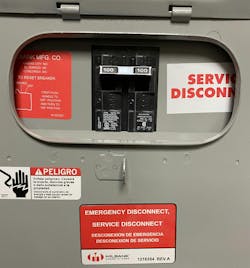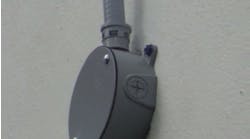I am often reminded of the importance of the definitions in Art. 100 when it comes to correctly applying and understanding Code rules. Here is yet another case in point.
When it comes to installing an emergency disconnect for a one-family dwelling unit as required by Sec. 230.85, installers may interpret that the disconnecting means is required to be located on or within 50 ft of the dwelling unit, since the literal wording in Sec. 230.85(A)(1) states the disconnect must be “installed in a readily accessible outdoor location on or within sight of the dwelling unit.” But, in reality, there is no limit on how far away the disconnect can be. There is no 50-ft limit. It can be 100 ft away if it is still “within sight” of the dwelling unit. That statement brings us to our definitions.
Article 100 defines “within sight”, aka “within sight from” or “in sight from,” as “equipment that is visible and not more than 50 ft distant from other equipment is in sight from that other equipment.” But this definition only mentions the distance from one piece of equipment to another piece of equipment and makes no mention of the distance from a building to a piece of equipment. Is the intent to include the distance from a building to a piece of equipment too? I suppose so, but that is a question you may need to discuss with your authority having jurisdiction (AHJ).
Section 230.85 is not the only requirement where the equipment is required to be “within sight” of a building. Many other rules use similar language, including but not limited to, Sec. 225.41(A)(1) for feeder emergency disconnects, Sec. 700.12(D)(4) for emergency generator sets, Sec. 701.12(D)(3) for legally required generator sets, Sec. 702.12(A) for optional standby generators, Sec. 550.32(A) for mobile home service equipment, and Sec. 550.33(A) for mobile home feeder disconnects. Other rules make it easier to apply the definition of “within sight,” including Sec. 430.102(A), which requires the disconnecting means to be located “in sight from” the motor controller location.
In this case, the 50-ft distance is between two pieces of equipment and aligns with the Art. 100 definition of “in sight from.” Perhaps we will see some revisions to help clarify the definition of “in sight from” for the 2026 Code. Until then, a discussion with your AHJ would probably be a good idea to help figure out these sometimes confusing requirements.





